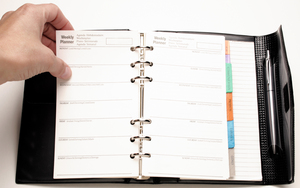Whether you are a teacher or a parent, would you like to have a 10 year old who loves to discuss the Dalai Lama, an 11 year old who is interested in mortgage interest, a 12 year old who writes her own creative stories, or a 15 year old girl who comes up with her own profound philosophical ideas?
I am fortunate to have those students, – my dyslexic students.
For over 20 years, I have worked as a support group facilitator, teacher, and principal with many students that have dyslexia, attention deficit disorder, or emotional disabilities. All of my students continue to amaze me on a daily basis.
Below are the six most important tips that enable my dyslexic students to be amazing and successful:
1. Read advanced materials.
My 10 year old dyslexic student reads on a fifth or sixth grade level. He can reads words like amphibians, provincial, and enthusiastic, but he still stumbles over words like ‘in’, ‘from’, or ‘hum’. I’m not concerned about the little words that he sometimes misses because I know he will get them eventually. All of my dyslexic students outgrew those little disorienting words. Every day, all of my dyslexic students read aloud with me or an assistant. They all read advanced materials that engage their minds, access both left and right brain hemispheres, and encourage them to think. We train our students to say “Help” BEFORE they become disoriented with a word. We focus on the content of what we are reading and do not let words prevent us from enjoying reading. Reading advanced and interesting materials does not only contribute to the students’ amazing sense of accomplishment (despite being dyslexic) but it exposes them to the wonderful world that the written word can reflect. By using advanced reading materials, dyslexic students quickly learn to understand that reading is about discovering a new and interesting world and the challenges that come with reading become secondary and minor.
2. Beware of sleep, hunger, being sick, low energy.
The biggest antagonist to a successful reading experience with a dyslexic student is sleep, hunger, being sick, or having low energy. Many of my dyslexic students are night owls. In working with dyslexic students I discovered that some dyslexic students are most creative and full of energy in the middle of the night; a fact that easily interferes with academic performance. I train my reading assistants to try to notice whether a dyslexic child has the energy to read or not. Sometimes we miss the signs. It only takes a few words of reading though to notice when a dyslexic child did not get enough sleep. Reading that otherwise would flow easily becomes choppy, disoriented (turning letters and words around), and a waste of time. Depending on how much energy the child has, we then avoid reading and redirect the student to a discussion, an exploration, or an artistic activity relating to the book.
3. Discuss the reading material.
Reading and discussing words, sentences, or stories with a dyslexic student is one of the most exciting experiences for a teacher or reading assistant. Dyslexic students think outside the box, bring up completely new insights, and add astonishing aspects to any reading material. Whether I read a science book about birds with a 10 year old or a world literature book with a 15 year old, I am always surprised by the different point of views that my students add to the reading material. While discussing the theme of change in literature today, my 15 year old dyslexic student explained to me that the reason why people do not like change is because they are afraid. They are afraid because they do not know what happens after the change. The fear of change is the fear of the unknown. As a teacher, I think that is quite profound.
Besides using reading material as a means to encourage students to use their dyslexic gift of innovative thinking, we also use discussions as a means to direct a student’s reading energy. If a student tends to run over periods or other punctuation marks, we use a discussion as a way to teach a student it is time to stop, take a look at what the sentence is saying, and to take a breath. If a student gets confused after those little words that cause disorientation in the brain, we use a discussion to rest the eyes, to recoup, and to gain new reading energy. It is a win – win situation for both the student and the teacher.
4. Use writing as an art & exploration.
We choose our battles. Spelling is not one of them. My younger students practice the spelling of words that are important to them with a spelling program on the computer but we do not make a big deal of it. We practice the spelling of words so students are exposed to traditional academic exercises but we mainly focus on using modern technology to assist with the spelling challenges that accompany dyslexia. Our older dyslexic students are already trained to use computer technology and peer editing to take care of any spelling mistakes.
Like reading or the discussions about reading, my dyslexic students use writing not as a spelling battle but as a means to express their original and pioneering thoughts. One of the fun writing exercises I do almost daily with my younger dyslexic students is that we pick 4 to 6 newly learned words from the day’s reading material and try to form sentences with it. Our students have developed their own fun little challenge by trying to use as many assigned words in one sentence as possible. We collect those sentences in a word processing document and also read them daily to get to know those words. After only a few days of repetitively reading those sentences with the once challenging words, the students become so familiar with them that we can officially ‘retire’ them.
5. Learn to see the world with the eyes of a dyslexic student.
Teaching dyslexic students is a daily discovery of new ways to look at the world. Dyslexic students are not only innovative, pioneering, original, and curious but they also have a unique perceptual ability (the same characteristic that causes problems in reading and hand writing). My dyslexic students have not only taught me to think outside the box but to also look at the world and a word from different perspectives. For anyone who is not dyslexic and would like to gain an insight into the world of dyslexia, one can look at a drawing or words in a mirror. Turn the paper upside down and try to read it again. Cut up the paper, mix up the pieces, turn some of them over – and then try to read it again. To understand the pioneering and innovative thoughts of dyslexic students, put all the piece in random order together and try to make new sense of them. The little mirror and cutting exercise might help you to understand why the world of a dyslexic student is filled with infinite possibilities.
6. Support the child to become the first in something.
Anyone who tries the above exercise with the paper might understand why the world of a dyslexic student is filled with a tremendous amount of challenges and opportunities, and why so many dyslexic people become he first in something. We support our students in exploring the incredible talent of dyslexia and their chance to be pioneers. Some of the unique interests our dyslexic students have explored include a new and creative viewpoint of the world of finances, writing, drawings, art, music, politics, psychology, and philosophy.
Over the years, some parents of my dyslexic students discovered they also had dyslexia. They didn’t know about their own dyslexia until their child was diagnosed. Some parents, on the other hand, already knew they had dyslexia. Many of those parents told me that their own success was due to the fact that their life had focused on the amazing ability and not the disability of dyslexia. As one of the fathers told me, “My parents died when I was 16. I was on my own. I succeeded in life because I was strong-willed, I pursued the untried, and I had dyslexia.”






